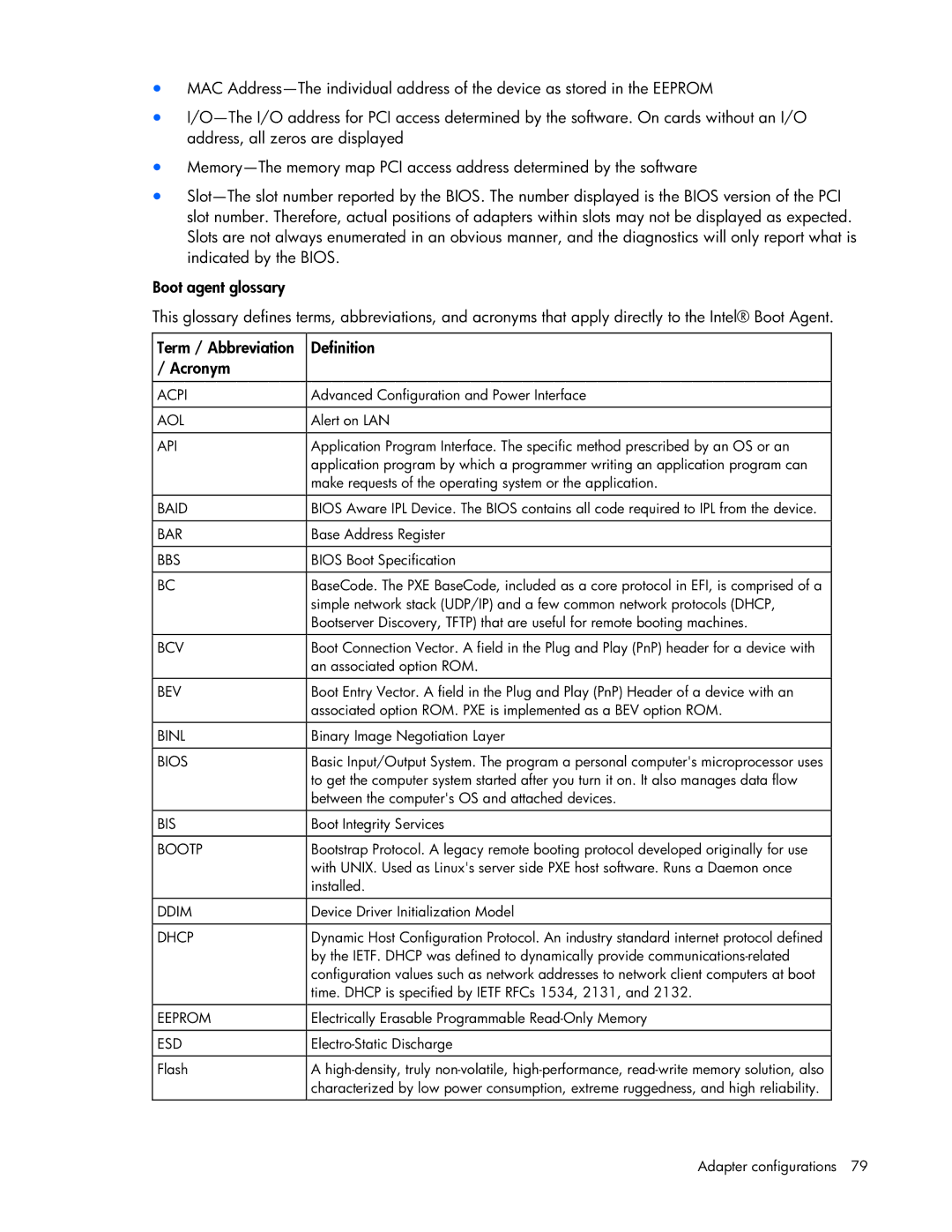•MAC
•
•
•
Boot agent glossary
This glossary defines terms, abbreviations, and acronyms that apply directly to the Intel® Boot Agent.
Term / Abbreviation | Definition |
|
/ Acronym |
|
|
|
|
|
ACPI | Advanced Configuration and Power Interface |
|
|
|
|
AOL | Alert on LAN |
|
|
|
|
API | Application Program Interface. The specific method prescribed by an OS or an |
|
| application program by which a programmer writing an application program can |
|
| make requests of the operating system or the application. |
|
|
|
|
BAID | BIOS Aware IPL Device. The BIOS contains all code required to IPL from the device. |
|
|
|
|
BAR | Base Address Register |
|
|
|
|
BBS | BIOS Boot Specification |
|
|
|
|
BC | BaseCode. The PXE BaseCode, included as a core protocol in EFI, is comprised of a |
|
| simple network stack (UDP/IP) and a few common network protocols (DHCP, |
|
| Bootserver Discovery, TFTP) that are useful for remote booting machines. |
|
|
|
|
BCV | Boot Connection Vector. A field in the Plug and Play (PnP) header for a device with |
|
| an associated option ROM. |
|
|
|
|
BEV | Boot Entry Vector. A field in the Plug and Play (PnP) Header of a device with an |
|
| associated option ROM. PXE is implemented as a BEV option ROM. |
|
|
|
|
BINL | Binary Image Negotiation Layer |
|
|
|
|
BIOS | Basic Input/Output System. The program a personal computer's microprocessor uses |
|
| to get the computer system started after you turn it on. It also manages data flow |
|
| between the computer's OS and attached devices. |
|
|
|
|
BIS | Boot Integrity Services |
|
|
|
|
BOOTP | Bootstrap Protocol. A legacy remote booting protocol developed originally for use |
|
| with UNIX. Used as Linux's server side PXE host software. Runs a Daemon once |
|
| installed. |
|
|
|
|
DDIM | Device Driver Initialization Model |
|
|
|
|
DHCP | Dynamic Host Configuration Protocol. An industry standard internet protocol defined |
|
| by the IETF. DHCP was defined to dynamically provide |
|
| configuration values such as network addresses to network client computers at boot |
|
| time. DHCP is specified by IETF RFCs 1534, 2131, and 2132. |
|
|
|
|
EEPROM | Electrically Erasable Programmable |
|
|
|
|
ESD |
|
|
|
|
|
Flash | A |
|
| characterized by low power consumption, extreme ruggedness, and high reliability. |
|
|
|
|
| Adapter configurations 79 | |
